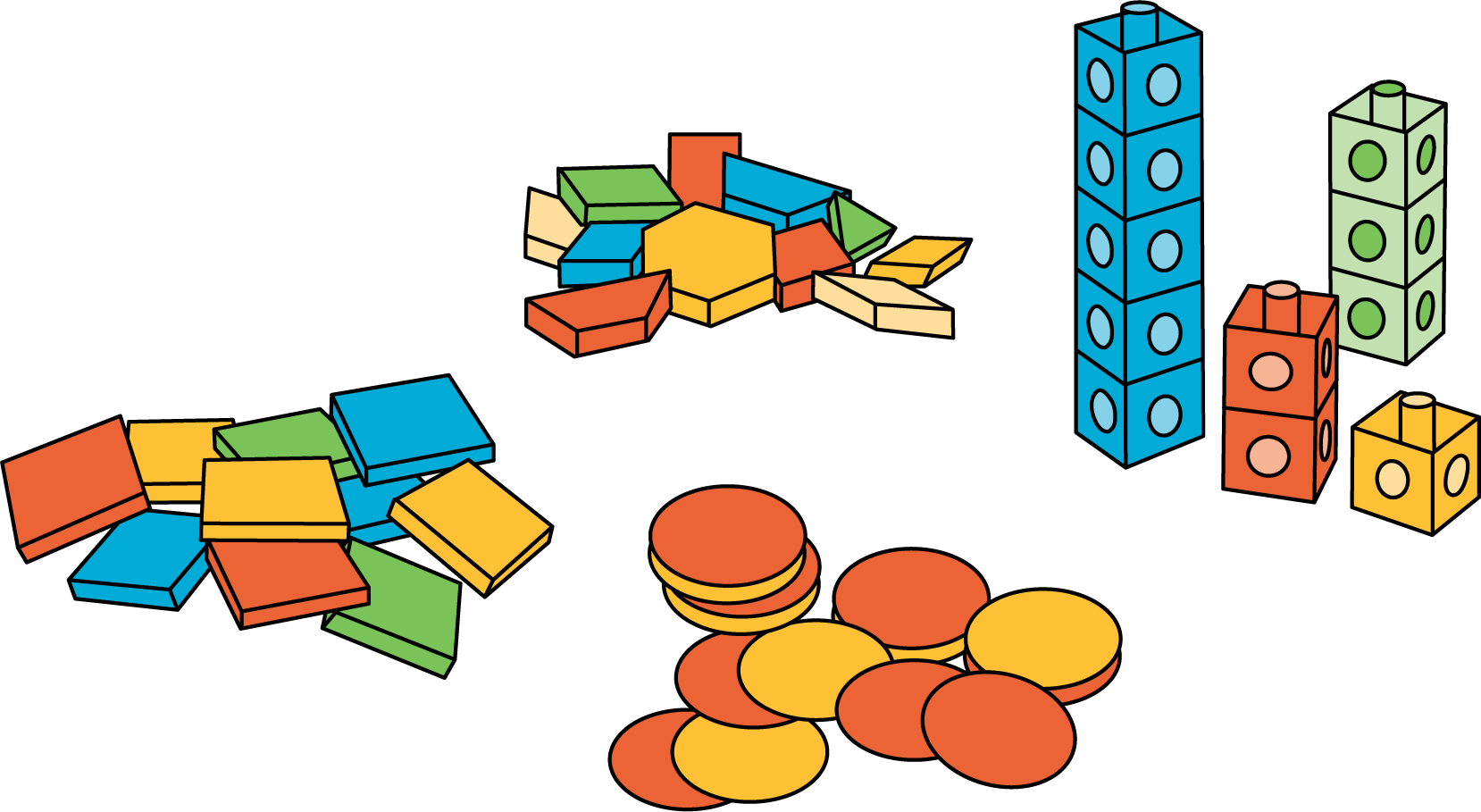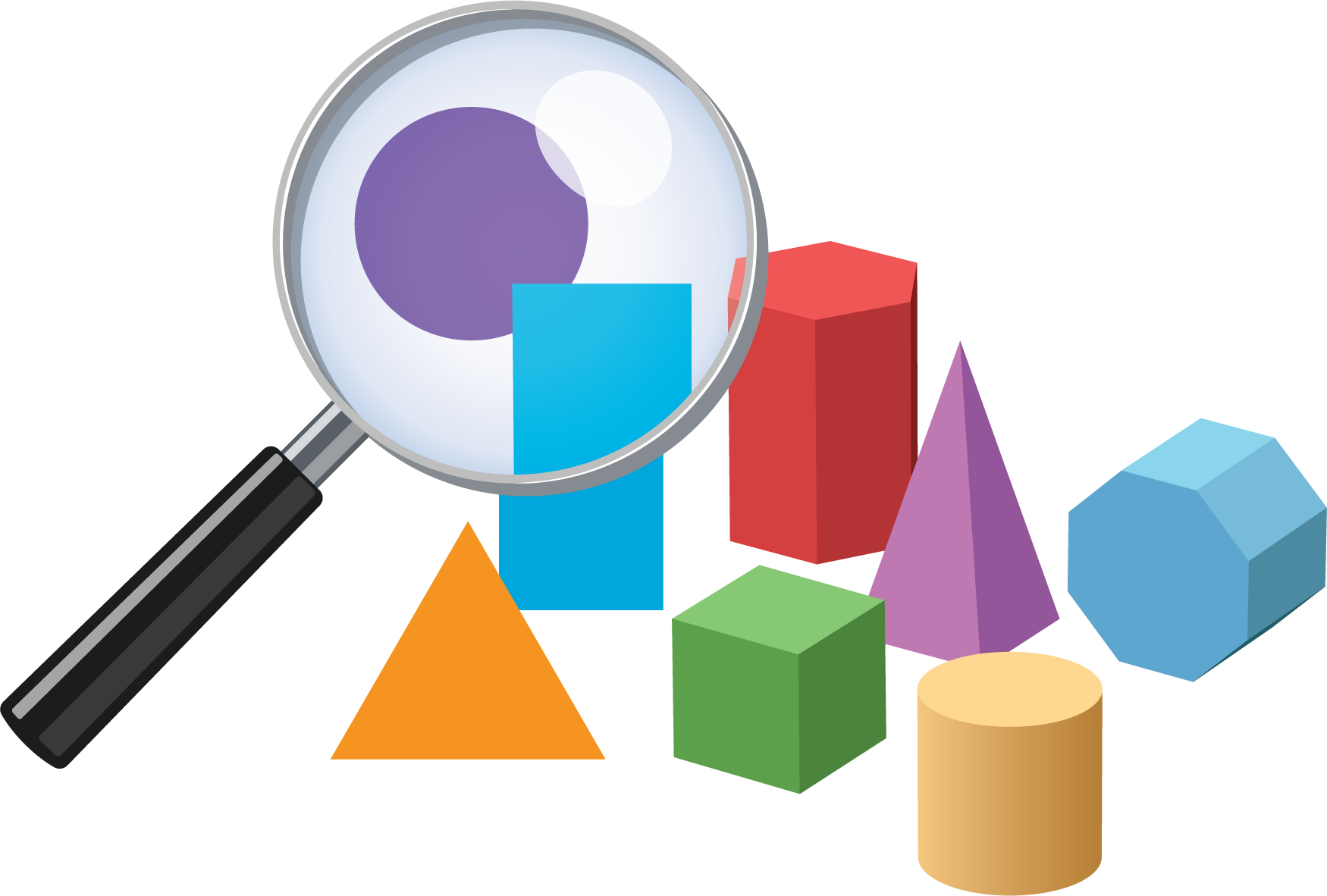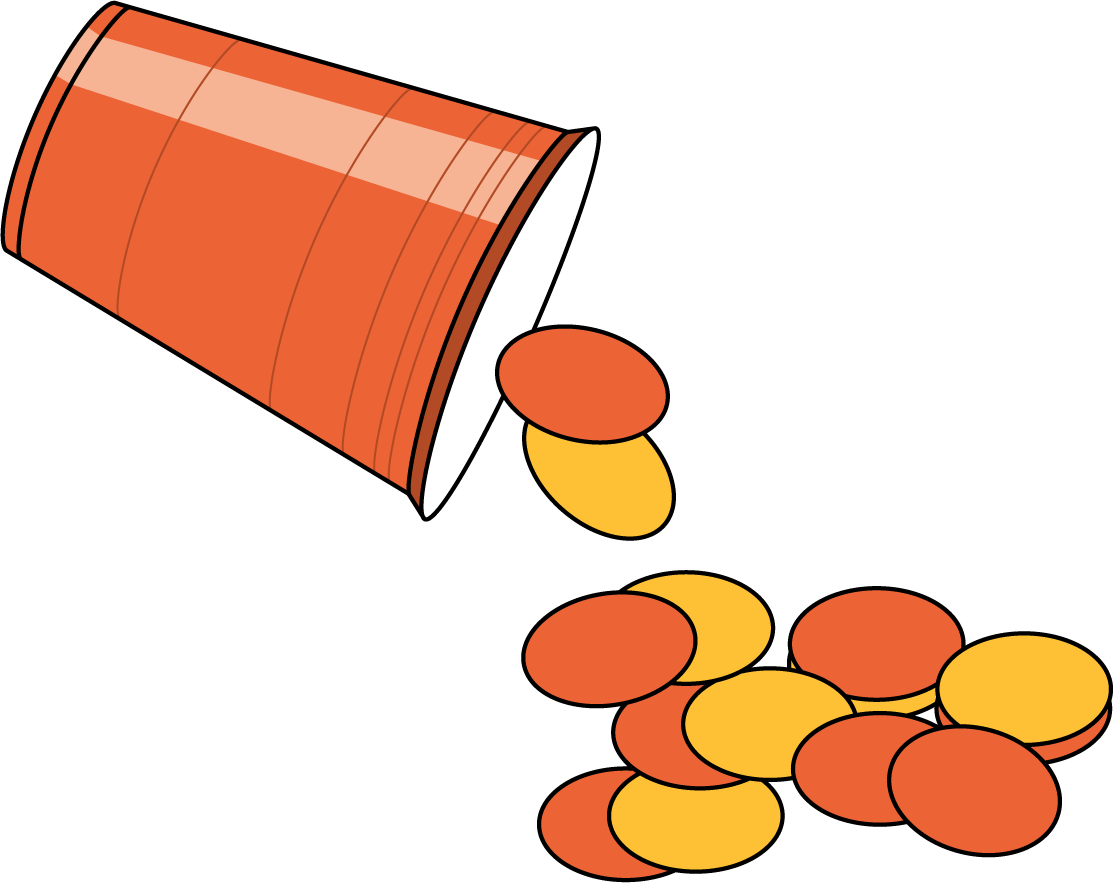Lesson 5
Circles and Triangles
Warm-up: Which One Doesn’t Belong: Shape Attributes (10 minutes)
Narrative
Launch
- Groups of 2
- Display the image.
- “Pick one that doesn’t belong. Be ready to share why it doesn’t belong.”
Activity
- 30 seconds: quiet think time
- 30 seconds: partner discussion
- Share and record responses.
Student Facing
Which one doesn’t belong?




Student Response
For access, consult one of our IM Certified Partners.
Activity Synthesis
- Display image C.
- “What is different about this shape?” (It has a side that is curved.)
- “Do you know any other shapes that have curved sides?” (A circle.)
Activity 1: Color Circles and Triangles (10 minutes)
Narrative
The purpose of this activity is for students to identify examples of circles and triangles. The geometric terms circle and triangle are formally introduced, though some students may already be familiar with the terms and may have heard or used them in previous lessons. This activity exposes students to a wider variety of circles and triangles than they may have seen previously, which encourages students to expand their concepts of the shapes. Students may incorrectly identify some shapes as triangles or circles, particularly distactors, such as a shape that looks like a triangle but has 4 sides. These shapes can be discussion points and are expected throughout kindergarten. Students distinguish between defining and non-defining attributes of shapes in grade 1.
Advances: Listening, Speaking
Supports accessibility for: Visual-Spatial Processing
Required Materials
Materials to Gather
Required Preparation
Launch
- Groups of 2
- Give each student access to 2 different color crayons or colored pencils.
- Display the image from the book.
- “Mai put her shapes into 2 groups. What do you notice? Why do you think Mai put these shapes together?”
- 30 seconds: quiet think time
- Share responses.
- “What can we name each group?”
- 30 seconds: quiet think time
- 30 seconds: partner discussion
- Share responses.
- “We can call this group circles. All of the shapes in this group are circles. We can call this group triangles because all of the shapes in this group are triangles.”
- “What do you know about circles?”
- 30 seconds: quiet think time
- 30 seconds: partner discussion
- Share and record responses.
- “What do you know about triangles?”
- 30 seconds: quiet think time
- 30 seconds: partner discussion
- Share and record responses.
- Display student workbook.
- “Color all of the circles that you find with 1 color. Then color all of the triangles that you find with another color.”
Activity
- 4 minutes: independent work time
- “Choose 1 triangle that you colored in. Tell your partner 1 thing that you know about that shape.”
- 30 seconds: quiet think time
- 30 seconds: partner discussion
- “Write a number to show how many triangles you colored. Write a number to show how many circles you colored.”
- 1 minute: independent work time
- “Did you color more triangles or more circles? How do you know?”
- 30 seconds: quiet think time
- 30 seconds: partner discussion
Student Facing







Student Response
For access, consult one of our IM Certified Partners.
Activity Synthesis
- Display shape from student book or draw shape:
- “Did you color this shape? Why or why not?” (I didn’t color the shape. It looks like a triangle but one of the sides is round.)
- Display shape from student book or draw shape:
- “Did you color this shape? Why or why not?” (I didn’t color this shape. It looks like a circle but it is stretched out.)
Activity 2: Triangle Sort (15 minutes)
Narrative
Required Materials
Materials to Copy
- Triangle Sort Cards
Required Preparation
- Cut out triangle cards from the blackline master. Each group of 4 needs 1 set of cards.
Launch
- Groups of 4
- Give each group a set of cards.
- “Work with your group to sort the shapes into 2 groups. Put the shapes that are triangles on the left side of your page. Put the shapes that are not triangles on the right side of your page. When you place a shape, tell your group why you think the shape belongs in that group.”
Activity
- 4 minutes: small-group work time
- Monitor for students who discuss attributes of triangles when sorting.
- “Write a number to show how many shapes are in each group.”
- 1 minute: independent work time
- “Walk around to see how the other groups organized their shapes. Did they organize them the same way that your group did?”
- 6 minutes: work time
Student Facing
Let’s put the shapes into 2 groups.
Triangle



Not a Triangle


Student Response
For access, consult one of our IM Certified Partners.
Advancing Student Thinking
- “How did you choose which group to put this shape in?”
- “What is alike, or the same, about all of the shapes in this group?”
Activity Synthesis
- Display cards O, K, and G next to each other.
- “Noah says that the shape in the middle is not a triangle because it is pointing down and triangles have to point up. Do you agree with Noah? Why or why not?“
Activity 3: Introduce Counting Collections, Up To 20 (20 minutes)
Narrative
The purpose of this activity is for students to learn stage 1 of the Counting Collections center. Most students should be given collections with 6–10 objects. Based on formative assessment data collected in previous sections, adjust the number of objects in collections for individual students. Provide students with counting mats and 5-frames to help them accurately count or organize their collections. Students use appropriate tools strategically as they choose which tools help them count their collections (MP5). In a future variation of this center, students will draw pictures or write numbers to represent their collection.
After they participate in the center, students choose from any stage of previously introduced centers.
- Which One
- Picture Books
- Bingo
- Shake and Spill
Required Materials
Materials to Gather
Required Preparation
- Gather materials from:
- Which One, Stage 1
- Picture Books, Stages 1-3
- Bingo, Stages 1 and 2
- Shake and Spill, Stages 1 and 2
Launch
- Groups of 2
- “We are going to learn a new center called Counting Collections. Work with your partner to figure out how many objects are in your collection. Use the tools if they are helpful. When you and your partner agree on how many objects are in the collection, you can choose another collection.”
Activity
- 8 minutes: partner work time
- “Now you can choose another center. You can also continue doing Counting Collections.”
- Display the center choices in the student book.
- Invite students to work at the center of their choice.
- 10 minutes: center work time
- If time, invite students to choose another center.
Student Facing
Choose a center.
Counting Collections

Which One

Picture Books

Bingo

Shake and Spill

Activity Synthesis
- “Did you and your partner do the same thing to figure out how many objects were in your collection? What did you do the same? What did you do differently?”
Lesson Synthesis
Lesson Synthesis
“Today we named circles and triangles. How are circles and triangles different? What words can you use to describe triangles? What words can you use to describe circles?”
“Where at home do you see circles or objects that look like circles? Where do you see triangles?”
Cool-down: Unit 3, Section A Checkpoint (0 minutes)
Cool-Down
For access, consult one of our IM Certified Partners.

